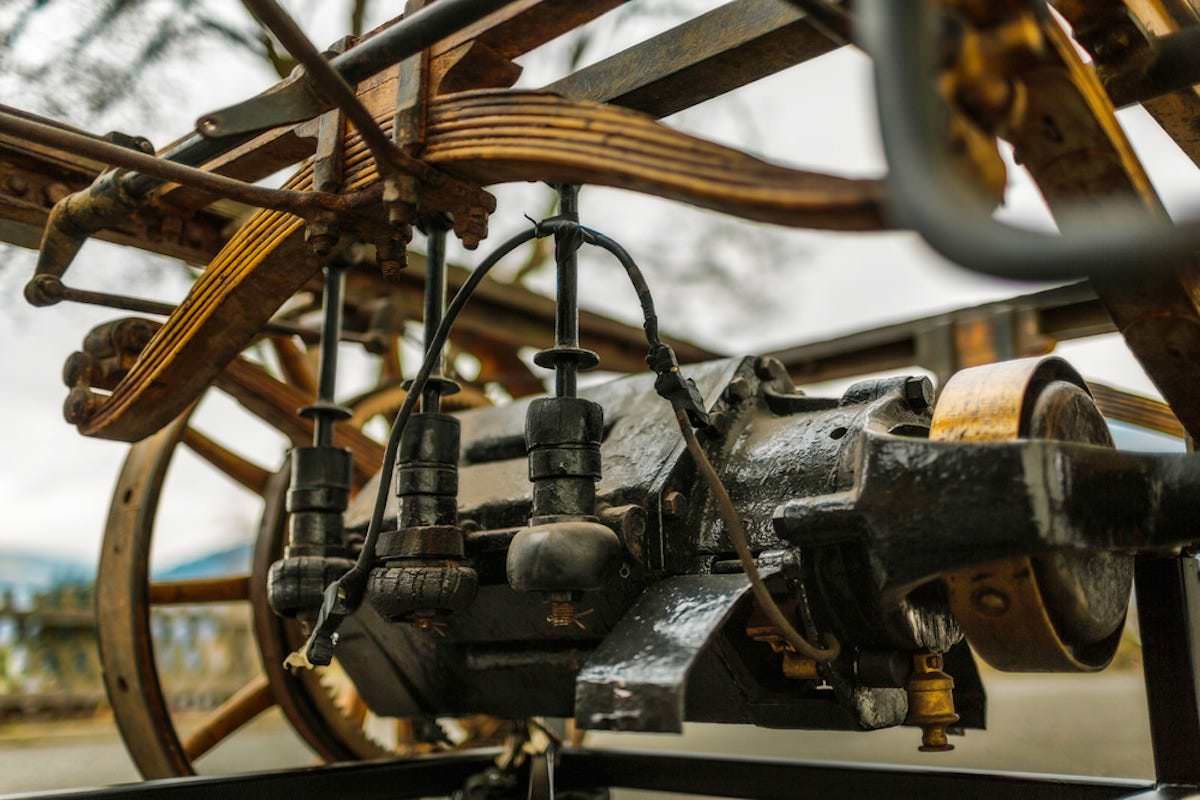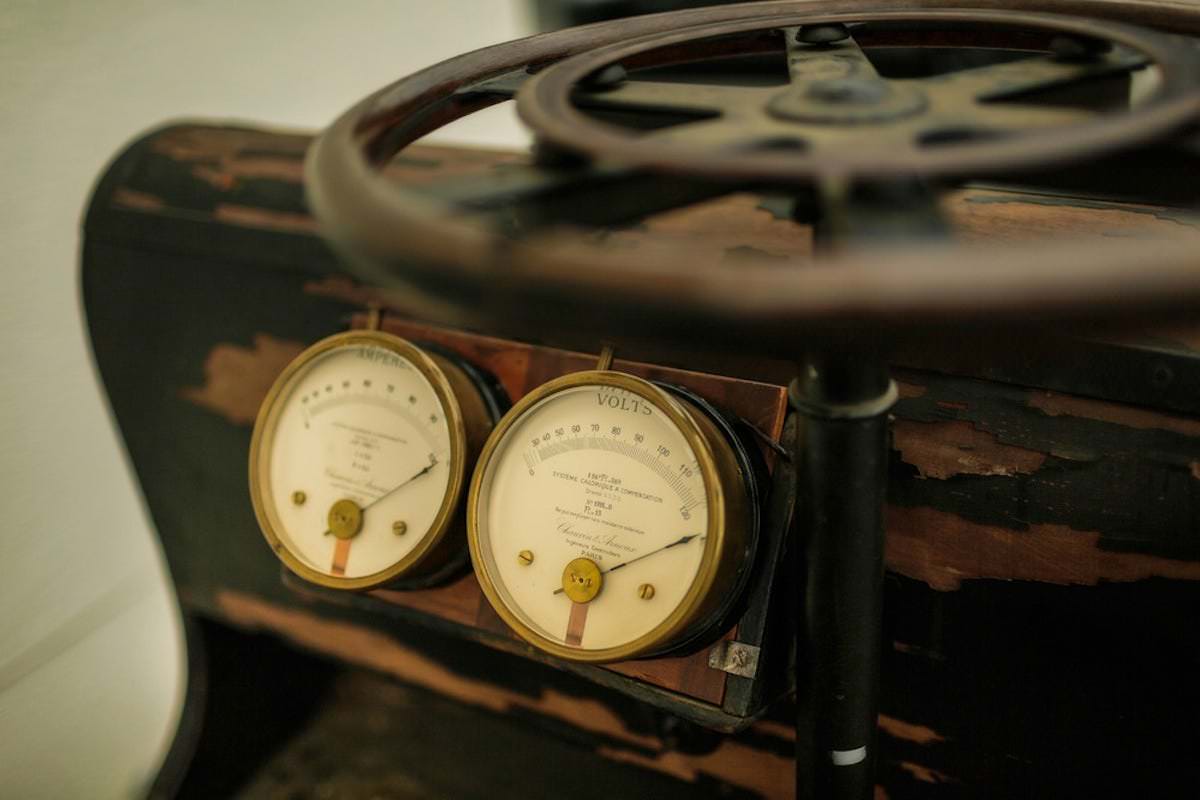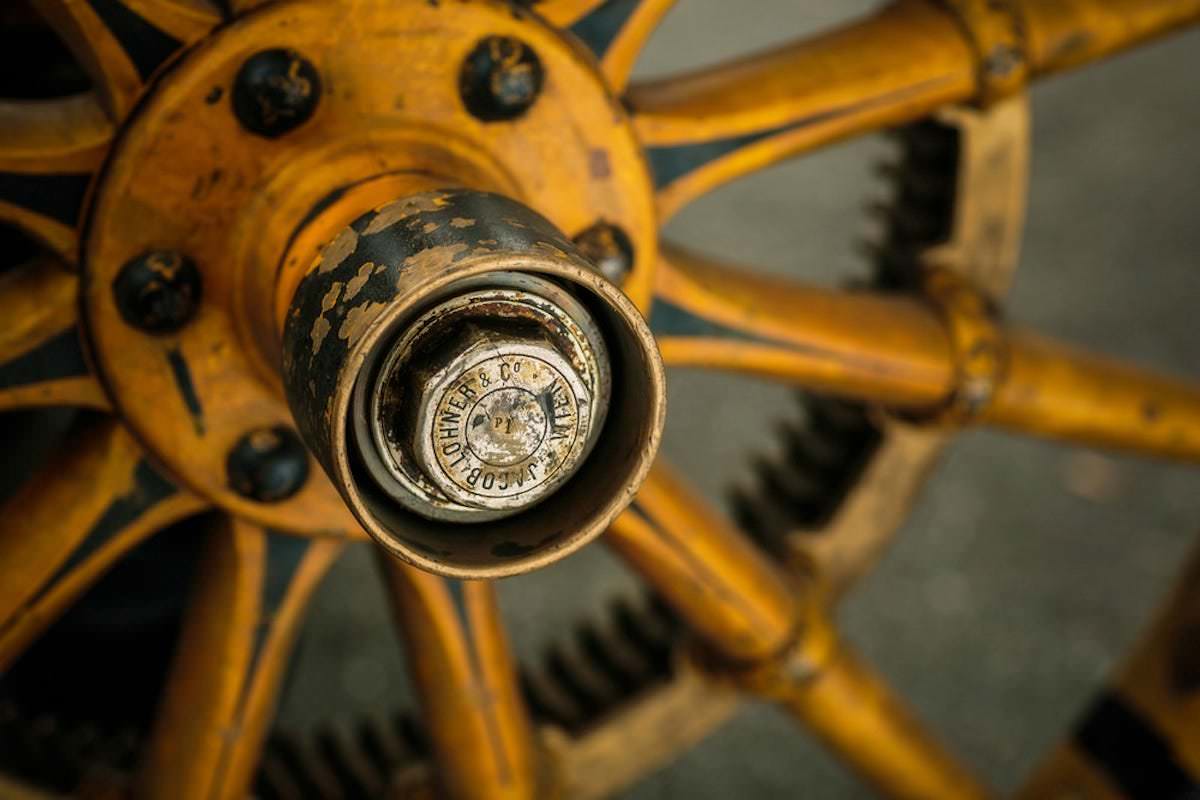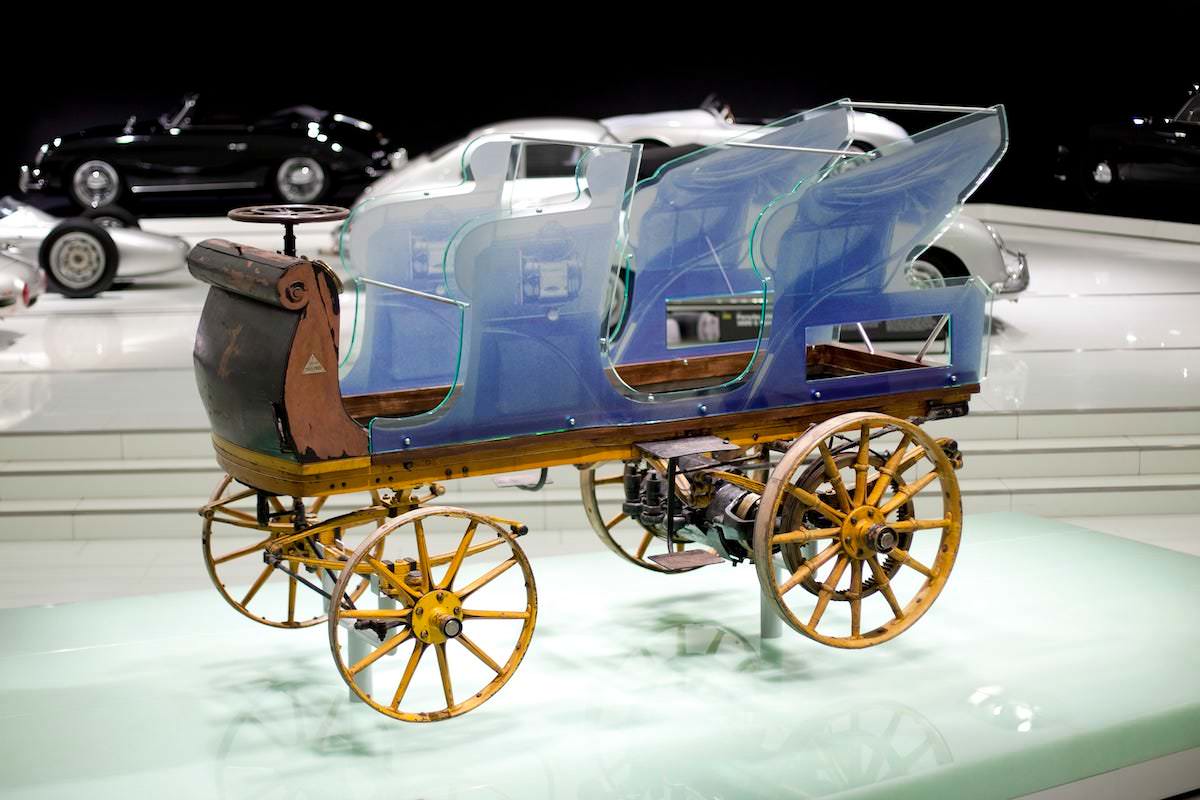In 2014, the P1 was found in a shed in Austria where it had been sitting since 1902. The fact that it remained untouched and undiscovered for over 112 years is remarkable. The condition of the vehicle was surprisingly good despite its age and the long period of storage. This discovery was a significant moment for Porsche and automotive history enthusiasts, revealing a lost treasure of early electric vehicle technology.

Early Life and Innovations of Ferdinand Porsche
Ferdinand Porsche, born in 1875, showed an early aptitude for electrical engineering. By the time he was 25, Porsche had already made significant contributions to the field of electric vehicles. His early works included designing an electric hub motor for Lohner & Co., a company known for manufacturing luxury vehicles. Porsche’s innovative approach to automotive engineering laid the groundwork for the creation of the P1.
Design and Technical Features of the P1
The P1 boasted several innovative features for its time. Powered by an electric motor, it was a pioneer in the field of electric vehicles. The motor was capable of outputting 3 hp for regular performance and could peak at 5 hp during overloading. The vehicle’s design reflected a keen understanding of efficiency and aerodynamics, which were crucial for maximizing the performance of the limited battery technology of the era. The P1’s top speed of 22 miles per hour and a range of 50 miles were impressive achievements, showcasing Porsche’s forward-thinking engineering.
Manufacturing and Debut of the P1


Ferdinand Porsche completed the P1 in 1898, and it made its debut in a street demonstration in Vienna. This event marked not only the public unveiling of Porsche’s creation but also a significant moment in the history of electric vehicles. The P1 was a showcase of what electric power could achieve in the realm of transportation, challenging the prevailing norms of horse-drawn carriages and early gasoline vehicles.
Rediscovery of the P1 in Austria
In 2014, the P1 was rediscovered in a shed in Austria, where it had lain undisturbed since 1902. The vehicle’s survival in relatively good condition over such an extended period is extraordinary. This rediscovery was not just a significant find for Porsche enthusiasts but also for historians and technologists interested in the evolution of automotive design and electric vehicles.
Condition of the P1 Upon Discovery

When found, the P1 was missing some key components, including its original batteries, seats, and parts of the bodywork. However, the electric motor was still in working condition, underscoring the durability of Porsche’s engineering. The remaining parts, such as the steering wheel, dashboard, and wheels, were well-preserved, providing insight into the craftsmanship and automotive aesthetics of the late 19th century.
Restoration Efforts and Challenges
Restoring the P1 posed unique challenges due to its age and the missing components. The restoration team at the Porsche Museum faced the task of preserving the vehicle’s authenticity while ensuring it could be displayed effectively. The decision to use blue translucent plastic to represent the original seating was a compromise, balancing historical accuracy with the need to give visitors a clearer picture of the car’s original design and use.
Display at the Porsche Museum in Stuttgart

The P1 is now a centerpiece at the Porsche Museum in Stuttgart, Germany. The museum’s display allows visitors to journey back to the origins of the Porsche brand and witness the early stages of electric vehicle technology. The P1’s presence in the museum serves as a bridge connecting the past and present of automotive innovation.
Technical Specifications of the P1
The P1’s technical specifications were groundbreaking for its time. It featured a rear-mounted electric motor, a design choice that would become a hallmark of many Porsche models. The electrical system was powered by a 44-cell 80-volt lead-acid battery, which contributed significantly to the vehicle’s total weight. The car’s chassis was a lightweight framework, a testament to Porsche’s understanding of the importance of weight distribution and management in vehicle design.



First Porsche was electric. It turns out all the ICE engine cars aren’t the “real” Porsches.
Porsche finally getting back to its roots!
Has the deviated wood-paneling too, really nice spec
Whoa way ahead of the game. That’s exactly the conclusions I would have come up with